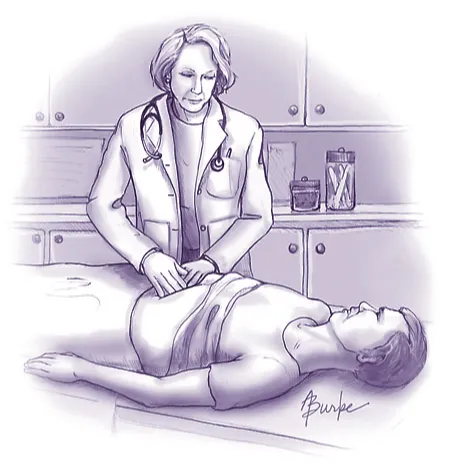Risk Factors Journal of Nursing

Case Study: A Systematic Approach to Early Recognition and Treatment of Sepsis
Tags: assessment Case Study emergency department guidelines mortality prevention risk factors sepsis standard of care treatment
The term sepsis is often misunderstood. The public and often healthcare workers are unaware of the severity and high mortality rates this infection process has upon the world. Sepsis has vague symptoms that make diagnosis difficult. Often, sepsis is diagnosed in the later stages, when more obvious yet severe symptoms occur. This case study discusses a female who presents to the emergency department with sepsis secondary to pneumonia. Over the course of three days, the patient’s health quickly deteriorates, demonstrating the rapid progression of sepsis. Clinical findings, such as vitals signs, lab abnormalities, and symptoms of sepsis are discussed. The term bundle of care is presented to educate the reader on the golden standard of care for treatment of sepsis. This case study intends to increase community awareness and education to health care providers as well as providing an evidenced-based treatment guideline. More education and raised awareness will help prevent a deadly yet treatable infectious process.
Read More →
Knowing Transfusion-Related Acute Lung Injury
Tags: lung injury pulmonary risk factors transfusion
Transfusion-related acute lung injury occurs within 6 hours post transfusion where patient develops shortness of breath without signs of pulmonary overload in chest xray. With evidence of hypoxemia / low oxygen saturation.
Read More →
Disease Preveniton and Health Promotion Screening: Breast Cancer
Tags: breast cancer cancer diagnostic assessments risk factors screening
Current risk factors for breast cancer, screening recommendations, and latest diagnostic assessments.
Read More →
A Review of the Treatment for Postoperative Nausea and Vomiting
Tags: anesthesia health care professionals nausea PACU post-op risk factors treatment options vomiting
Common treatments reviewed for the treatment of postoperative nausea and vomiting, mostly in the PACU phase of care.
Read More →
Recognizing Heart Disease As a Women's Disease
Tags: female diseases heart attack heart disease risk factors stress womens disease
There are noted differences among heart disease signs between men and women. Coronary Heart Disease can go unnoticed in women until they actually suffer a heart attack (NIH). Thus it is essential women are aware of the signs and symptoms, risk factors and healthy life style choices to prevent the devastating effects of heart disease. .Seeking early treatment when symptoms present is vital in improving the outcome of heart disease. It is important to teach women how to incorporate prevention strategies such as: consuming a healthy diet, maintaining optimum weight, maintaining an active lifestyle, maintaining both normal blood sugar and blood pressure levels as well as avoiding risk factors such as smoking, drinking alcohol limit their stress and any unhealthy behaviors that can lead to heart disease. Advocating for women and promoting education regarding health issues affecting women needs to be a priority so heart disease in women can be prevented and effectively treated.
Read More →
Asymptomatic Bacteriuria: The Question for Treatment
Tags: adults asymptomatic bacteriuria diabetes guidelines risk factors screening
To improve the quality of care in patients with asymptomatic bacteriuria to promote safety.
Read More →
Basic Cardiac Assessments: Physical Examination, Electrocardiography, and Chest Radiography
Tags: cardiac cardiac assessments chest radiology electrocardiography ICU physical examination risk factors surgical unit
The human heart is one of the major organs adversely affected by high blood pressure. Therefore, the registered nurse must provide a careful and thorough evaluation of the assessments needed via the cardiac structure and function (i.e., including visual signs, all non-and invasive cardiac medical devices), which is an obligatory part of the examination of the hypertensive patient.
Read More →
Clinical Profiling: Natural History of Essential Hypertension
Tags: clinical profiling essential hypertension health care Manuscript risk factors stress
Hypertension is a major cardiovascular risk factor that directly contributes to myocardial episodes such as abnormal wall motion, hypertrophies, and subsequently an infarction (MI). Also noted, are cerebrovascular accidents (CVA), congestive heart failure (CHF), peripheral arterial insufficiency (PAI), and premature mortality. Optimal and cost-effective management of the condition depends on careful diagnosis, treatment minimization, and optimized adherence to the selections of tests and treatment plans.
Read More →
Malnutrition in the Elderly: An Unrecognized Health Issue
Tags: elderly elderly patients health issue malnutrition nurse risk factors
Malnutrition is defined as an imbalance of nutrients caused by either an excess intake of nutrients or a nutritional deficit. Malnutrition is becoming increasingly more common among the elderly population. This is a cause for concern considering malnutrition negatively affects the health of the older adult. An estimated 5-10% of elderly people living in the community setting are malnourished (Furman, 2006). About 60% of hospitalized older adults (age 65 or older) and 35-85% in long-term care facilities are experiencing malnutrition (Furman, 2006). From these statistics, malnutrition seems to be even more prevalent in hospitals and long-term care facilities, as compared to community-dwelling older adults.
Read More →
Pressure Ulcers Management
Tags: complication health management nurse nursing assistant nurtrition pressure ulcer risk factors skin wound care
Pressure ulcers are a major complication associated with the loss of mobility, activity, increased moisture, poor nutrition, friction, shear, and altered sensory perception. They are caused by unrelieved compression of the blood vessels and tissues resulting in the lymphatic system not filtering waste products.
Read More →
Preventing Falls in the Elderly Long Term Care Facilities
Tags: elderly elderly care fall prevention falls health nurse risk risk factors
The elderly long-term care population is at increase risk for falls and fall related injuries. The implementation of a fall prevention program is important for ensuring resident safety. Systematically assessing residents’ risk for falls and implementing appropriate fall prevention interventions can reduce the number of falls in the elderly long-term care residents.
Read More →
The Significance of the Missed Assessment: HIV/AIDS in the Older Adult
Tags: aging aids behavior Community Health Nursing disease elderly hiv risk factors
The health care system has faced many struggles related to the understanding the HIV virus and in caring for those affected and likely to be affected by this life threatening communicable disease.
Read More →Get Published for Free
Browse by Tag
advocate aging anesthesia behavior cancer cardiac care Case Study child children clinical COVID-19 critical care death diabetes disease education emergency department end of life ethical principles ethical values ethics graduates health health care ICU medication mental health nurse Nurse Education nursing nursing ethics nursing faculty nursing school nursing students PACU patient care patient outcomes patient safety pediatric pediatrics poem risk factors stress student nurse students teaching therapy treatment violence
Most Popular Last Month
More from RN Journal
Nursing Students Readying to Save Lives
The Hospital Room: Not Just Four Walls
Elective Induction of Labor and Early Term Delivery
Managing wounds in the home
Quality Improvement in Pain Management
Detour Off The Sepsis Road: Early Recognition is Key
There Are No Simple Cases
Nursing Speciality Certification
Story of Sarah









